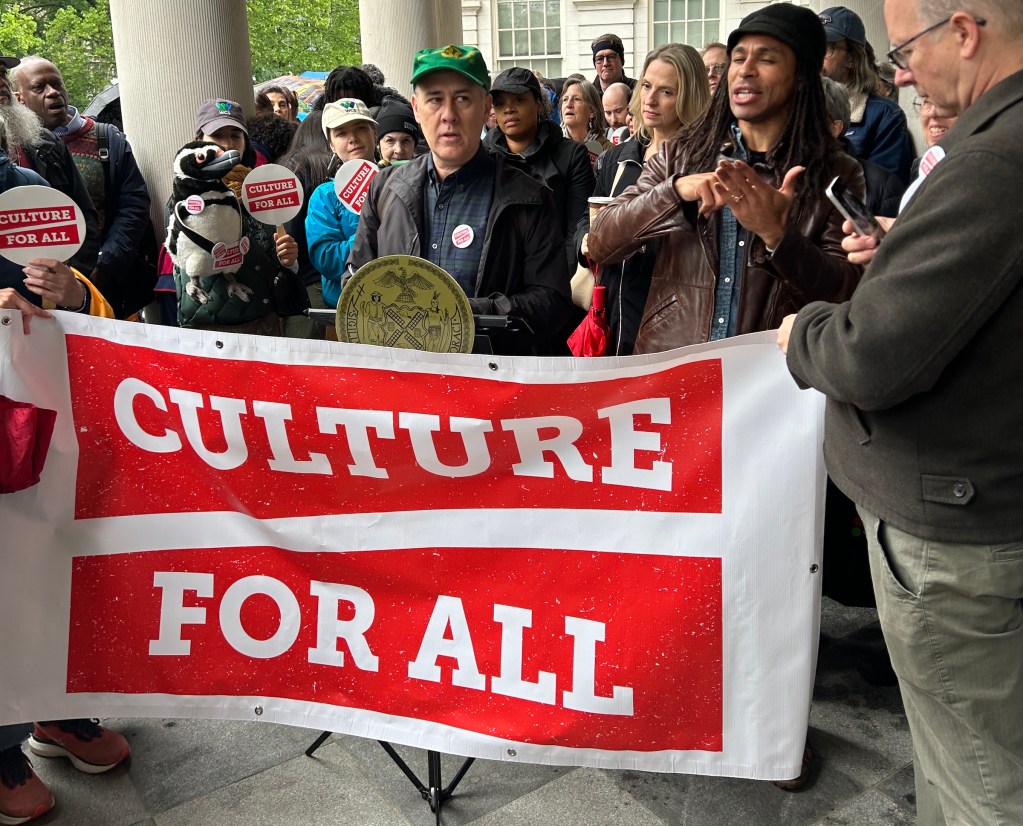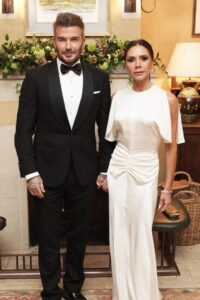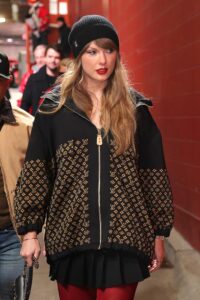Hit by Federal Grant Losses, NYC Culture Orgs Ask for More City Funding


Several dozen New York City arts and culture advocates — including unionized museum workers, public school educators, community nonprofit leaders, visual artists, theater performers, and musicians — rallied in the rain outside City Hall in Manhattan yesterday morning, May 21, to call for increased funding for the sector.
Coordinated by the advocacy organization New Yorkers for Arts and Culture (NY4CA), the action was held ahead of City Council hearings on Mayor Eric Adams’s $115 billion executive budget proposal for the 2026 fiscal year. The mayor’s expense plan draft, dubbed the “Best Budget Ever” in a not-so-subtle echo of President Donald Trump’s “One Big Beautiful Bill,” comes amid increasing instability in the cultural sector. Slashed federal spending, layoffs at museums nationwide, Trump’s global tariff war, and a looming economic recession have deepened financial uncertainty at a time when institutions say they’re still recovering from post-pandemic attendance drops.
The proposal recommends allocating $215.1 million to the Department of Cultural Affairs (DCLA) — an amount that Council Member Carlina Rivera, who chairs the city’s committee on cultural affairs and libraries, told Hyperallergic was a “step in the right direction.” Last year’s proposed $151 million for DCLA was eventually raised to $254 million after pushback from cultural advocates and organizations.
The mayor’s expense plan also restores and permanently baselines the $45 million allocation provided last fiscal year to the DCLA, representing the first significant raise to its baseline (the set of funds that carries over to next fiscal year) in more than a decade, according to the department.
These funds include $21.5 million for the Cultural Institutions Group (CIG), 34 member organizations that reside on city-owned property, including the Brooklyn Museum, El Museo del Barrio, and the Metropolitan Museum of Art; and $23.5 million for the Cultural Development Fund (CDF), a grant-giving program of the DCLA that provides annual funding to more than 1,000 cultural nonprofits across the city’s five boroughs, primarily small organizations like A.I.R. Gallery, Pioneer Works, and the Caribbean Cultural Center.
Cultural advocates are urging the mayor to add $30 million — less than 0.03% of the city budget — to the DCLA baseline in the finalized expense plan for 2026, which is expected to be adopted by the end of June.

Advocates argue that the recommended $45 million baseline raise, while historic, is not enough to address the millions that have been lost federal grant funding from the National Endowment for the Humanities, the National Endowment for the Arts (NEA), and the Institute for Museums and Library Services (IMLS). Though some federal grants were reinstated this week in the wake of a court ruling, the government funding landscape remains murky and unstable. According to the Independent Budget Office, New York City-based organizations received more than $32 million in funding from these three federal agencies in 2024.
“ When we ask for 30 million to be added to the baseline, it is to help protect us and restore us and keep us going strong into these coming years, which we know are gonna be rough for all of New York City,” Lucy Sexton, executive director of NY4CA, said at yesterday’s rally.
This call for an additional $30 million enhancement was echoed by City Council in its funding requests to the mayor. Among those who lost NEA grants areCIG members like Flushing Town Hall, a Queens-based cultural organization that testified at yesterday’s hearings; and CDF grantees like the Bronx Council on the Arts (BCA), which offers financial support for local arts and culture projects through its re-grant program.
“Without NEA, and with steep competition for [city] dollars, small orgs like ours suffer the most,” Viviana Bianchi, the BCA’s executive director, told Hyperallergic in an email. She said that the organization is depending on DCLA to cover the NEA gaps and shrinking donor support over the last year.
“Private foundations are changing their priorities and have withdrawn support for intermediary service organizations such as ours,” Bianchi said.

Organizations have been seeking out alternative resources, such as crowdfunding campaigns and newly launched grant programs from philanthropy organizations.
“I hope not only will the city and the state government try to fill in the [funding] gap, but I really hope that individuals and foundations will try to fill in the gap as well,” Kathleen Gilrain, the executive director for the Brooklyn nonprofit Smack Mellon, told Hyperallergic.
Last week, after the NEA terminated its $40,000 grant for its year-long Artist Studio residency program, the organization reached out to community members for donations.
“Even if the city has the money, and I don’t know if they do … it’s not really a [long-term sustainable] solution,” Gilrain said.
The $30 million addition to the baseline would also help cultural institutions pay staff salaries as layoffs continue to plague the sector. At yesterday’s rally, Metropolitan Museum of Art worker Manus Gallagher, president of the District Council 37 Local 1503 union, emphasized the need to support the city’s cultural workers.
“ When city funding goes to these organizations, it flows to our communities … [Union cultural workers] spend their hard-earned wages in our neighborhoods right here in New York City,” Gallagher said.






